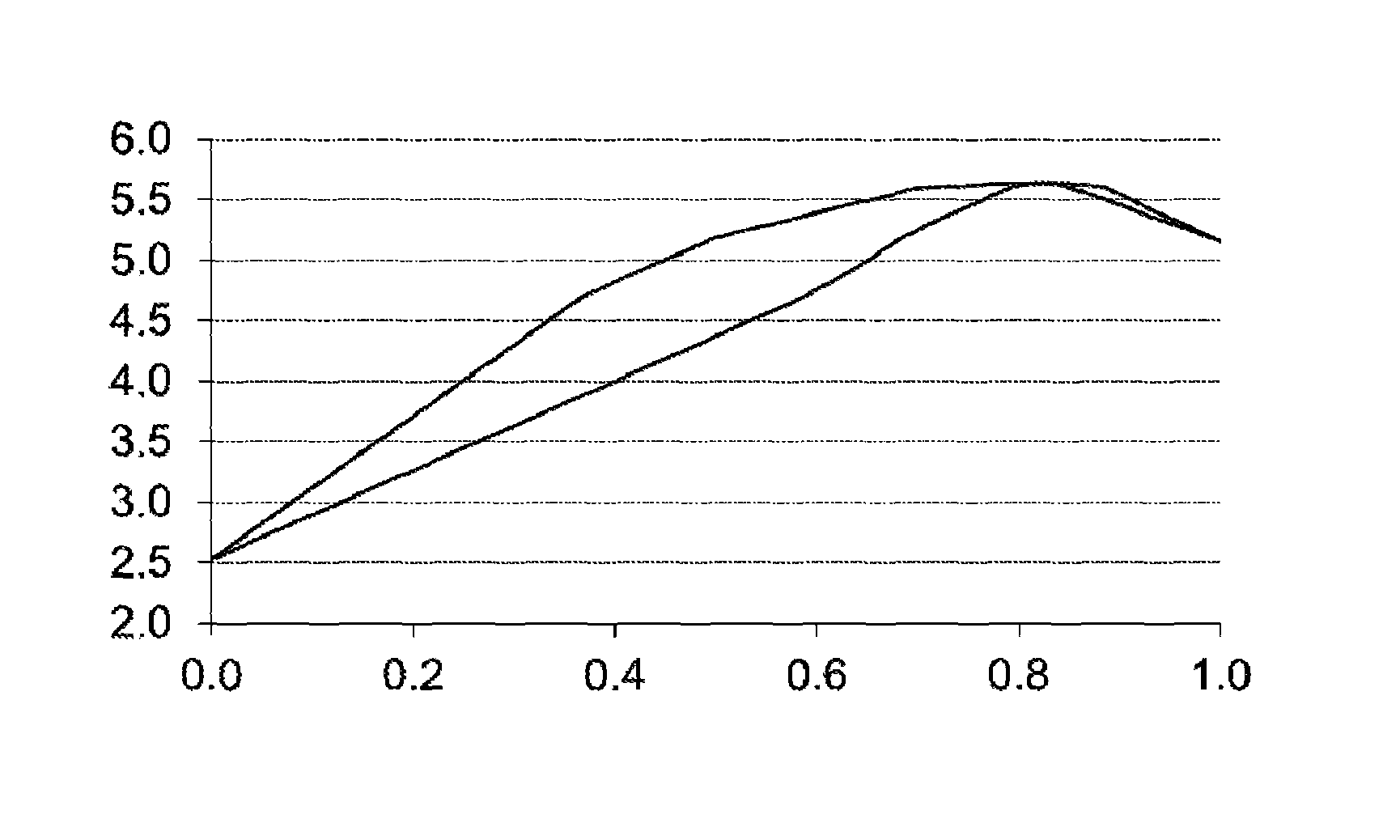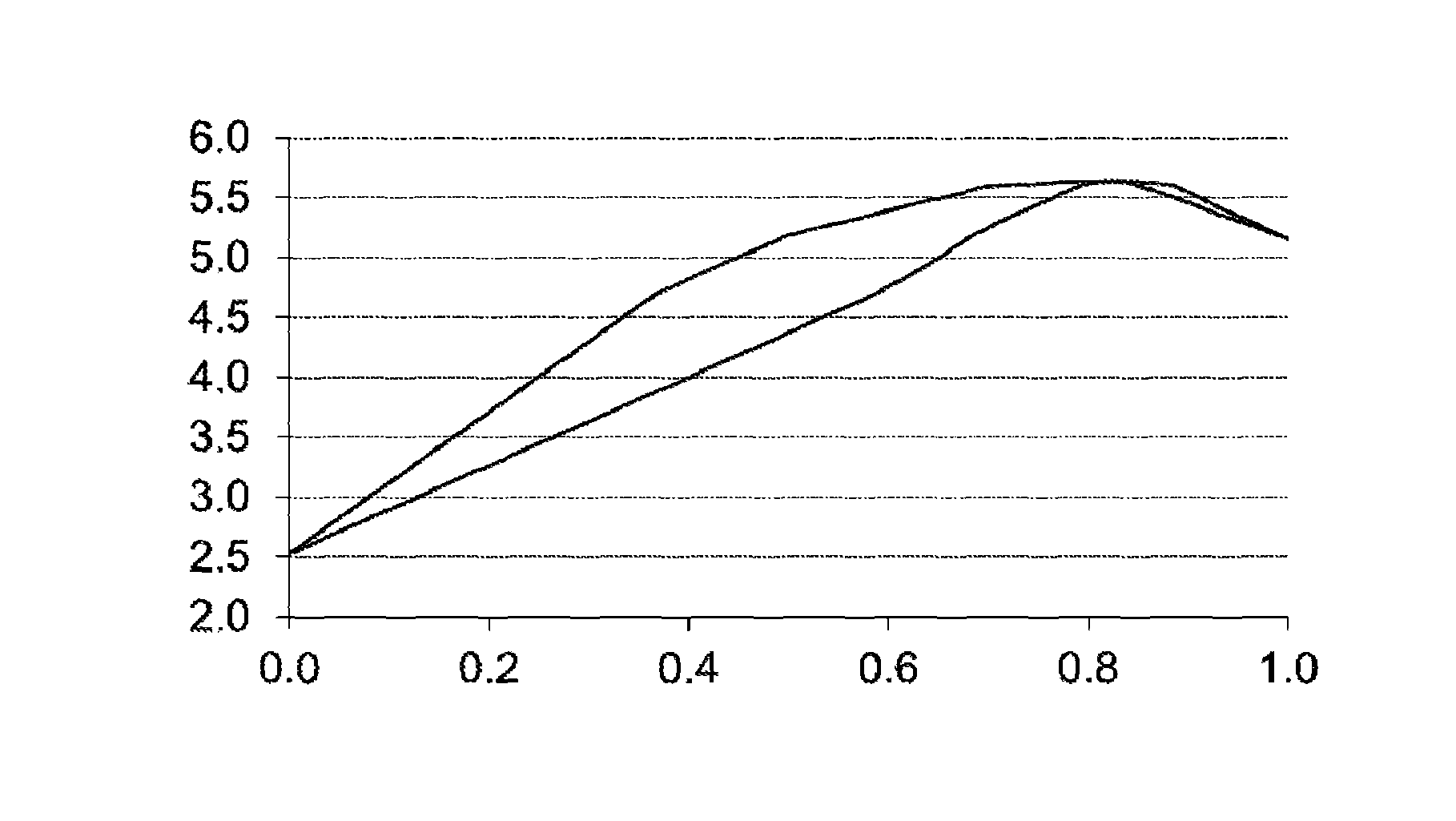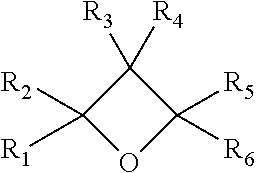Binary compositions of 1,3,3,3-tetrafluoropropene and ammonia
a technology of tetrafluoropropene and ammonia, which is applied in the field of binary compositions of 1, 3, 3, 3tetrafluoropropene, can solve the problems of high compressor outlet temperature, limited authorized total charge, and damage to the ozone layer of chlorinated compounds
- Summary
- Abstract
- Description
- Claims
- Application Information
AI Technical Summary
Benefits of technology
Problems solved by technology
Method used
Image
Examples
example 1
Azeotropic or Quasi-Azeotropic Compositions
[0122]A vacuum cell equipped with a sapphire tube is cooled to 5° C. with an oil bath. Once thermal equilibrium has been reached, the cell is charged with HFO-1234ze and the pressure at which the equilibrium is reached is recorded. An amount of NH3 is introduced into the cell and the contents are mixed in order to accelerate the equilibration. At equilibrium, a minimum amount of sample is withdrawn from the gas phase and from the liquid phase for gas chromatography analysis with a thermal detector.
[0123]The equilibrium data obtained with different compositions of HFO-1234ze (trans-1,3,3,3-tetrafluoro-1propene) and NH3 are represented in FIG. 1.
PUM
| Property | Measurement | Unit |
|---|---|---|
| temperature | aaaaa | aaaaa |
| temperature | aaaaa | aaaaa |
| temperature | aaaaa | aaaaa |
Abstract
Description
Claims
Application Information
 Login to View More
Login to View More - R&D
- Intellectual Property
- Life Sciences
- Materials
- Tech Scout
- Unparalleled Data Quality
- Higher Quality Content
- 60% Fewer Hallucinations
Browse by: Latest US Patents, China's latest patents, Technical Efficacy Thesaurus, Application Domain, Technology Topic, Popular Technical Reports.
© 2025 PatSnap. All rights reserved.Legal|Privacy policy|Modern Slavery Act Transparency Statement|Sitemap|About US| Contact US: help@patsnap.com



